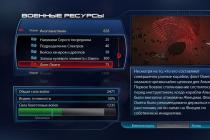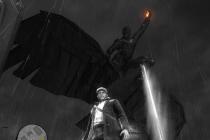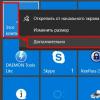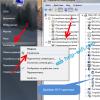Holidays in Greece
Tours and interesting travels in 2018.
The country is located in the south-east of Europe and occupies the southern tip of the Balkan Peninsula. Greece is administratively divided into 52 nomes (regions), which, in turn, are divided into 264 dima (districts). In addition, it is divided into several historical and geographical areas.
Choosing a vacation spot
Useful when traveling
I speak greek -
(milao elinika) - mini-dictionary ...
Holidays in mainland Greece
 Saronic Islands: Solomina, Aegina, Poros, Hydra and Spetses.
Saronic Islands: Solomina, Aegina, Poros, Hydra and Spetses.
Islands of the Aegean Sea: Evia (Evia) is the second largest island in Greece off the eastern coast of its mainland.
Northern Sporades: Skyros, Skopelos, Jura.
Cyclades: there are 39 islands in total that form a ring. The main islands are Amorgos, Andros, Ios, Kea, Kythnos, Miloe, Naxos, Paros, Serifos, Sifnos, Thira (Santorini).
Read Before Traveling To Greece
State structure
Parliamentary republic, head of state - president, supreme legislative body: unicameral parliament, capital - Athens. The official language is Modern Greek. Religion - Orthodoxy (head of the Greek Orthodox Church - Archbishop of Athens).
Climate
Practically throughout Greece, a mild Mediterranean climate with various shades - from alpine to maritime. Winters are warm and humid, summers are dry and hot. The average January temperature is +9 C, the July temperature is +28 C.
Money
Since March 2002, the Greek currency has been the euro. Until this year, the local currency was in circulation - the drachma in banknotes in denominations of 100, 200, 500, 1000, 5000 and 10,000 drachmas and coins in denominations of 5, 10, 20, 50 and 100 drachmas.
The official time is 1 hour behind Moscow. The transition from winter to summer time and back in Russia and Greece occurs simultaneously.
Search and booking: |
Useful Tips
Cloth. In everyday life, the Greeks prefer comfortable and practical clothes without any special frills, and they are liberal towards people in shorts and slippers on the streets and even in museums. However, it should be remembered that when visiting monasteries there is a strict rule: it is strictly forbidden for men to appear there in shorts and T-shirts, and women in trousers or mini-skirts are strictly prohibited. In many monasteries there is a room in front of the entrance, where long skirts for women hang and loose trousers for men.
Taxi... Taxi cars can be identified by their color: in Athens they are yellow, in Thessaloniki they are blue and white, in small towns they are usually gray with the name of the city on the front door. Often on the roofs are installed "lanterns" with the inscription "TAXI". All cars must have a meter and a price list with uniform prices.
Purchases. If you decide to go shopping, we advise you to pay attention to the opening hours of Greek shops - it is not quite usual. Monday, Wednesday, Saturday from 8.00 to 1.30; Tuesday, Thursday, Friday from 8.00 to 13.30 and from 17.30 to 20.30. This does not apply to large department stores and supermarkets, which are open from 8:00 to 19:00. Gift and fur shops are open on Sundays.
Hotels. Greeks introduce traditional hotel classification.
Greece has switched to a standard hotel classification with the assignment of "stars" from one to five.
373 Greek beaches received blue flags in 2013
In Greece, found the ruins of the ancient temple of Zeus
During archaeological excavations in the area of Dion and Pieria / Greece / the ruins of the ancient temple of Zeus were found.
Ten years after the opening of the Temple of Olympian Zeus on the same territory, for the first time in Greece, a temple dedicated to Zeus was discovered, according to the Greek Embassy in Moscow.
Professor Dimitrios Pandermanlis, who has been leading archaeological work in Dion for the past 35 years, and archaeologist Corina Vasteli, said the find was from the Hellenistic and Roman periods.
The remains of the temple were discovered almost by accident on the western banks of the Vafira River during flood protection works. The walls of the temple, several pedestals for animal sacrifices, the altar itself, the sanctuary and a human-sized statue of Zeus seated on a throne were discovered right near the river bank.
This is the first temple, the entrance of which was directed to the south - most of the temples in Greece "look" to the east. This fact is explained by the fact that the supposed home of Zeus / Olympus / is located just south of Dion.
The most significant find archaeologists also consider the figures of 14 life-size marble eagles, framing the statue of Zeus.
The figures of eagles and the statue of Zeus have been moved for storage to the Dion Museum, and an analytical demonstration of the finds will be conducted on Friday by the head of archaeological work in the region, Professor Dimitrios Pandermanlis. (RIA News")
Dangerous cosmetics flood the coast of Greece
Cosmetic products hazardous to health, which are replicas of well-known cosmetic brands, are spreading at the speed of light in the Greek consumer market. Private detectives with extensive experience in detecting counterfeits argue that recently there has been an unprecedented increase in the activity of criminals. This is a concern for major manufacturers. A few days ago it became known that a teenager had poisoned himself with a drink bought in a shop in one of the tourist areas of Attica.
Detectives have already hit the trail of a gang supplying the Greek market with dangerous creams, eau de toilette and all sorts of other goods. The difficulty lies in the fact that the gang, covering their tracks, often changes the type of product and distribution agents. The main points of sale are small shops and stalls in places where tourists gather. It is there that no one controls the quality of the goods.
Recently, another European tourist "bought into" a low price. Finding that the price of aftershave lotion in a local shop was 4 times less than in his country, he bought several packages at once. After the first use, the tourist began to experience severe skin irritation. The promised softening effect was not observed either. The victim went to court with a complaint against a cosmetic company. It soon became clear that the contents of the bottle had nothing to do with a well-known cosmetic brand, after which the tourist had to pick up the application.
Underground museums opened in Athens
New unique attractions.
The Attico metro, as this transport system is officially called, is now also an archaeological museum - during the construction of new stations and metro passages, many objects from the times of Antiquity were discovered, fragments of ancient architectural structures were discovered.
The total number of finds exceeds 10,000. Now they adorn the Attico metro. At the stations, glass built into the wall appeared, through which you can see various antiquities - an aqueduct built 2500 years ago, fragments of catacombs, carved sarcophagi, household utensils of the ancient Greeks, amphorae and fragments of Byzantine mosaics.
The most spectacular in design are the central stations - Acropolis (not far from the Parthenon) and Daphne, where passengers of the Athenian metro can get acquainted with the most valuable exhibits of this unusual underground museum.
New railway route will connect Moscow and Thessaloniki
A non-stop carriage between Moscow and Thessaloniki should run on the route through Kiev, Bucharest and Sofia once a week. The approximate cost of travel will be 5000-7000 rubles.
The route is being introduced for the convenience of passengers who are going to come to Greece in the summer.
The Moscow-Thessaloniki train should run only in summer.
Greek government will not allow women to Athos
The Greek government refused to comply with the European Parliament's resolution to lift the ban on women's access to Mount Athos ...
|
The Persians, defeated in a fierce battle at Marathon by an enemy who had much less strength, were forced to return to Asia, and for ten years they could not come to terms with their defeat. A decade later, they began a new military campaign that stretched out over the years. Athens at that time was itself a stage of political battles between the democratic group and the aristocrats, supported by large and medium-sized landowners. The impending war with the Persians sparked bitter disputes between the two warring factions, and preparations for it became a new stumbling block.
In the battle of Salamis, the Greeks showed not only miracles of courage and courage, but also became an example for the entire history of mankind of the fact that in the face of even a numerically superior enemy, love for the Motherland, veneration of their shrines, protection of their homes and families, and freedom so valued by the Greeks. gives strength not only to resist, but also to gain an unexpected and dazzling victory.
Events on the eve: disputes, contentions, choice of strategy
Representatives of the Athenian hostile groups also adhered to opposite views on the methods and means of the expected war. Aristides, the then leader of the Athenian aristocrats, believed that only ground troops would save Athens, and demanded that funds be used to build fortifications on land, in order to defend the internal territories. This was a defense tactic that, with a significant numerical superiority of the enemy, did not bode well for any positive developments.
The leader of the democratic group Themistocles, who went down in the history of Ancient Greece as one of the greatest politicians of that era, was more perspicacious and far-sighted, and considered the tactics proposed by the aristocrats to be wrong. He proposed not to let the enemy go to Athens, but to strengthen the coast of Attica and create a powerful navy. Subsequent events confirmed his innocence, proved that he was a wise and far-sighted politician, who knew how to correctly navigate in a difficult situation, to make the only correct decision.
Themistocles' victory in the struggle between the two groups ended with the ostracism of Aristides, who was expelled from Athens, and the leader of the democratic group made sure that the income from the famous Lavrian silver mines, distributed between the citizens of the Athenian polis, was redirected to defense needs.
In two years, the Athenian fleet increased by 100 units, and amounted to 180 triremes. Themistocles organized a military-defensive alliance of the Greek cities, headed by the Spartan commander-in-chief. One can only guess about the global nature of the plans of the Athenian leader, and the course of history, which could have taken place, the Persians delayed a little more. But two years later, a 100,000-strong Persian army invaded the Thracian coast of the Balkan Peninsula, crossing, led by King Xerxes, through the Hellespont Strait from Asia Minor. The Spartans, led by Leonidas, could not hold back the Persians in the Thermopylae Gorge, and the Greek fleet, which met them at Cape Artemisia, retreated after the battle to Attica.
In 480 BC. e. the Persians captured and destroyed Athens.
Shortly before that, the civilian population of Athens was evacuated to Salamis and Peloponnese, and the Greek army retreated to the same place. The Greek allied fleet, which consisted of about 380 triremes, took refuge in the Salamis Strait, a narrow one filled with pitfalls.
Ingenious strategic move and calculated benefits
 Themistocles' genius allowed him to correctly calculate the further course of events, and even persuade the Spartans not to withdraw their fleet to protect Peloponnese and Sparta. Realizing perfectly well that the Greeks had no chance against the colossal Persian army on land, he decided to deprive the Persians of the fleet, thanks to which the bases in Asia Minor were in contact with the Persian army, which supplied everything the army needed. The Greeks were on their territory and knew perfectly well the fairway of the Strait of Salamis, while the Persians did not have the necessary knowledge. The Persians' ships were large and powerful, but in a narrow strait they lost their maneuverability. On the high seas, the Greeks had no chance, but in a narrow and cramped strait, they received an indisputable tactical advantage due to the maneuverability of the triremes, and the knowledge of the fairway necessary for military maneuvers.
Themistocles' genius allowed him to correctly calculate the further course of events, and even persuade the Spartans not to withdraw their fleet to protect Peloponnese and Sparta. Realizing perfectly well that the Greeks had no chance against the colossal Persian army on land, he decided to deprive the Persians of the fleet, thanks to which the bases in Asia Minor were in contact with the Persian army, which supplied everything the army needed. The Greeks were on their territory and knew perfectly well the fairway of the Strait of Salamis, while the Persians did not have the necessary knowledge. The Persians' ships were large and powerful, but in a narrow strait they lost their maneuverability. On the high seas, the Greeks had no chance, but in a narrow and cramped strait, they received an indisputable tactical advantage due to the maneuverability of the triremes, and the knowledge of the fairway necessary for military maneuvers.
All these factors deprived the Persians of the advantage they had due to the number of ships. The ships belonged mainly to the Phoenicians and Asia Minor, because the Persians did not have their own fleet. The Allies provided their fleet in the hope of an easy victory, and the opportunity to profit well in wealthy Greece. The number of the Persian fleet was about 800 combat units, which was more than 2 times more than the Greek only in units, not to mention the size, and combat equipment. Only in a narrow and cramped strait did the Greeks have chances of victory, which Themistocles managed to see, supported by his supporters, who believed in his genius and sagacity.
Relying entirely on the numerical superiority and significance of weapons, September 28, 480 BC. e., Xerxes began to introduce his armada into the Salamis Strait. The Persians were confident of a quick and easy victory, and the Greeks were determined, and even desperate, because they realized that in this battle the fate of all Greece was being decided. The Persians intended to easily and simply destroy the Greek fleet, and the Greek fleet, consisting of Athenian and Spartan ships, intended to deprive the Persian army of such an opportunity. Information about the battle was preserved due to the fact that on one of the Hellenic ships was the Greek playwright Aeschylus, who later described the course of events in the tragedy "Persians".
Great battle and brilliant victory
 Huge Phoenician galleys huddled in a narrow strait and quickly deprived each other of the ability to maneuver, completely blocking the channel. Attempts to level the situation only led to even greater chaos, during which they interfered with each other, breaking long oars against the sides.
Huge Phoenician galleys huddled in a narrow strait and quickly deprived each other of the ability to maneuver, completely blocking the channel. Attempts to level the situation only led to even greater chaos, during which they interfered with each other, breaking long oars against the sides.
Fast and small Greek triremes, meanwhile, easily maneuvered between large ships and, obeying the commands of the trierers, began to attack the Phoenician clumsy ships. Clouds of arrows rained down on them, but they, hiding behind their shields, took the enemy on board, and those who remained on triremes, meanwhile, rammed the enemy with special pointed protrusions of their ships, broke the oars, completely depriving them of maneuverability.
The Persian-Phoenician fleet, led by Xerxes' brother Ariomenes, lost more than 200 ships in an incredibly short time, despite the fact that the Greeks lost about 40. The surviving ships of the Persian armada rushed to the exit from the strait, and they managed to break into the sea, but they already did not dare. The resulting defeat led to the fact that soon the allied fleet went to the shores of Asia Minor.
There is no doubt that the idea voiced by Themistocles was fully implemented by the commander of the Hellenic allied fleet Euribiades. Euribiades, as commander-in-chief, was able to use the maneuverability of the Greek ships, to realize the advantages obtained, to smash and disperse the experienced enemy fleet, to win an indisputable victory, which entered the annals of the world.
During the battle, many ships ran aground on their own, running into pitfalls, and some sank, and some were captured by the Greeks. Themistocles used an effective trick, pretending that his ships were retreating into the middle of the strait, and the enemy's ships fell into a place where they could not turn around at all, and in the meantime, the fleeing Greeks stopped and rushed into a furious counterattack.
But the battle of Salamis also became a clear illustration of the fact that the numerical superiority of the invader can be overcome with the help of skillful maneuver, brilliant tactical move, the use of territorial advantage, and the moral factor - not in  the last thing. The Greeks fought for their homeland, which was encroached on by the aggressor, and this doubled their strength and tripled their superiority over the enemy, whom they intended to prevent from reaching their homes and families. Xerxes, watching the battle, along with part of the army and the remaining fleet, left Greece and returned to Asia.
the last thing. The Greeks fought for their homeland, which was encroached on by the aggressor, and this doubled their strength and tripled their superiority over the enemy, whom they intended to prevent from reaching their homes and families. Xerxes, watching the battle, along with part of the army and the remaining fleet, left Greece and returned to Asia.
A magnificent stage in history
Part of the Persian army, under the command of Mardonius, still terrorized the Greek lands. In order to defeat the aggressor, Athens and Sparta united. In 479 BC. e. the Greeks defeated the Persian army with the combined Greek forces at Plataea in Boeotia. This time the Greeks were commanded by Aristides and Pausanias. There was a long and tedious road to victory over the Persian invaders, which, 30 years later, ended with a brilliant victory of the combined Greek fleet over the Phoenician-Cypriot fleet near (ironically) the eponymous city of Salamis, off the coast of Cyprus.
The history of Ancient Greece is a history of wars and alliances, conquests and victories, disintegration and defeat. To some extent, this is the history of world civilization, written in the form of a synopsis, the lessons of which were not taken into account by subsequent generations.
The modern elders of Athos Paisy Svyatorets
Azerbaijani wines
Azerbaijan is one of the most ancient centers of winemaking. In the necropolises of Leylatepe and Sarytepe, archaeologists discovered clay vessels for storing wine - evidence of the development of winemaking in Azerbaijan in the Late Bronze Age. The creation of industrial winemaking in Azerbaijan dates back to the middle of the 19th century. In 1815, by order of Emperor Alexander I, the Germans from Württemberg began to create colonies in the Caucasus. About 500 families moved to Transcaucasia. The first appearance of German settlers in Azerbaijan dates back to December 1818. They settled in a suburb of Ganja and were hospitably received by the Azerbaijanis. The city of Yelenendorf (now Goygol) became the first German colony in this area; during the 19th century, the settlements of Annenfeld, Georgsfeld, Alekseevka, Grunfeld, Eigenfeld, Traubenfeld, and others were also founded.
The property. Thessaloniki
Greece has it all. For example, the beautiful city of Thessaloniki, named after the no less beautiful half-sister of Alexander the Great - Thessaloniki back in 315 BC. It is indeed a beautiful historical and cultural center of Greece, which was confirmed by the UNESCO organization, making it a World Heritage City ...
Lost Atlantis. (part two)
In the last article, we considered the version that the legendary and mysterious Atlantis is still an invention of the ancient Greek philosophers. Now we will bring to your attention the opposite point of view. I want to note that we will only talk about those versions according to which Atlantis was in the Aegean Sea.
Monasteries in Meteora
Greek Meteora is a rock complex of indescribable beauty in the town of Kalambaka. Today, the six Greek Orthodox Monasteries of Meteora are rightfully ranked among the top ten attractions in Greece. Monasteries got their name from the Greek. "Meteora" (Μετέωρα), which means "between heaven and earth", which perfectly describes these magnificent structures. In the 11th century, the sandy peak, on which the monasteries are located, was a place of seclusion for Byzantine hermits.
Salamis Island (Salamis)- this is a beautiful island just 30 minutes from the capital of Greece Athens, where sandy beaches surrounded by rocks, monasteries, museums, theaters and abundant forests await you - it seems that this piece of paradise has absolutely everything!
But, oddly enough, with all this, there are very few hotels on Salamis, and this island does not particularly shine with tourists. It is rather a place where Greeks themselves, living in Athens or Piraeus, like to come, there are many houses, summer cottages, villages and other settlements built up with villas and summer cottages.
Salamina- the largest island Saronic Gulf, so it is unlikely that it will be possible to have time to inspect all the districts in one weekend. However, when going to Salamina, we advise you to be sure to visit local attractions, for example, Faneromeni convent of the 17th century, or Museum folk art and history with an excellent collection of Mycenaean ceramics and models of ships of the antique fleet.
Salamis also has Cave of euripides, in which the allegedly famous playwright loved to retire and compose his masterpieces. By the way, the length of the cave is about 50 meters, and it was built on a cliff over 115 meters high! Another structure named after the ancient Greek tragedian is Euripides theater, on the stage of which today they regularly arrange theatrical performances, concerts and festivals... The theater is located on the outskirts of the island's capital, the city of the same name, Salamis.
You can see ancient churches and old houses in the harbor of Ambelakia in the suburbs of the capital. And the city of Ambelakia is considered the oldest on the island. Here you will see ruins of the ancient Acropolis, churches of the XVI century., as well as the valley where the famous Battle of Salamis.
And, of course, do not miss the opportunity to walk in the shade of the wonderful coniferous forests, and on Salamis there are two of them - cozy and deserted Faneromeni and Kanakion popular among cycling enthusiasts. The latter also often hosts cycling competitions.
Salamis also has secluded the beaches with sandy coastlines with many fish taverns and small restaurants. By the way, be sure to dine at one of them, because Salamis annually produces the largest amount of fish and seafood in Greece, which form the basis of the diet of local residents.
Most of these well-equipped sandy beaches are located in the southern part of the island, since the north of Salamina is considered an industrial area, and therefore not the cleanest. And the best beaches of the island are Kaki Vigla, Faneromeni, Saterli, Celinia, Kanakia and Peristeria.
Athens. The island of Salamis is clearly visible on the map as a bend, not wrapped in a ring. The island is very close to the Greek mainland. Between them is a strait, in one place five hundred meters wide, in another - more than a kilometer. It cannot be called alpine, the peak Mavrovouni rose only 365 meters.
And even then the mountainousness of Salamis is mainly in the southern part, while the north is flat, only crossed by hillocks, and it is closer to the mainland. Therefore, logistics - the main roads and settlements are located on flat areas. There are enough forests on the island. They give the impression that they are as old as the island. Age-old trees are not cut down in their "youth", so they delight generations of islanders.

There are very few hotels in Salamis, as the majority of tourists are Greek. This is, so to speak, a sleeping or dacha place on the mainland. Here the territory was built up with villas and summer cottages. But this does not mean that tourists are not welcome here.
They come here to beautiful beaches, to see Hellenic sights: monasteries, churches built several centuries ago. The nature is cozy and beautiful here. Few of the guests of the island will not go up to cave of euripides- on a rock more than one hundred and ten meters high.

Or doesn't want to visit the oldest island town Ambelakia with the ruins of an antique acropolis and a church from the 16th century. Or visit the valley, where the soldiers of Greece were concentrated, who participated in the Battle of Salamis long before the onset of our era.
The two wonderful coniferous forests of Faneromeni produce healthy air, which, in combination with the sea air, cures a number of respiratory ailments.
Battle of Salamis Island
In the five hundredth years BC, the Greeks faced the Persians. Both those and others wanted to strengthen: the Persians - at the expense of the Athenian and Spartan lands, and the Greeks sought to defend their islands and city-states. The Persians fought on several fronts at the same time, the thirst for profit was so strong in them. For example, in the Greek direction and in. Athens was defeated.

The battle of two fleets in the long-lasting Greco-Persian war. Happened in 480 BC near. Even before that, the Persians destroyed Athens, its population moved to the island of Salamis. In the same place, on narrow flood channels between the mainland and the island territory, the Greek fleet was also located. According to various estimates, from 300 to 400 triremes (oared warships).
But in the face of a new danger that arose, the Greeks decided to unite all forces, forgetting about internal strife. Persian troops crossed from Asia to Europe on land and swam across the sea. Darius took the ships from the conquered peoples, strengthening his fleet. He brought the number of all triremes up to 1200 units.
But in the battle of Artemisia - the prologue Salamis battle, the Greeks realized in practice that the advantage in ships did not yet ensure a quick victory for the Persians. Thanks to the straits, along which the enemy triremes walked little, they always fought in open water, and there was little room for the maneuvers of ships.

But the allies of the Greeks could not stop the advance of the enemy hordes inland. This did not suit any of the rival parties.
The Persians, at their meeting, decided to give battle to the Greeks at Salamis. Perhaps this was facilitated by the Greek scout from Themistocles, who told about how weak the Greeks are and it is here that they need to be defeated. Queen Artemisia, accompanying the army, warned the commander Xerxes against imposing a battle at Salamis. Declaring that the defeat of the fleet will be the final and the existence of the ground forces. They say that the Greeks themselves will soon scatter.
The Greeks also had disagreements about the future battle, not everyone perceived Salamis as a territory for victory. The Athenians stood their ground: only here is victory over an enemy superior both in ships and in the experience of sea warriors is possible.
For the Persians, the Battle of Salamis was a strategic miscalculation in deciding who would win. And they also say: listen to the woman, but do it your way. The queen was right.

The Greeks gradually lured enemy ships into narrow straits. Trier commands Xerxes lost orientation in such a space and became uncontrollable. The ship with Queen Artemisia, which took part in the battle in the strait, found itself in this situation. In the mass of floating equipment, it was difficult even to turn to the side, rather than turn around and flee from a naval battle. Moreover, at the beginning of the strait, into which the Greeks were lured, the triremes were awaiting an ambush.
The victory saved Hellas from being enslaved by the Persians. It gave a new impetus to the development of ancient Greek culture and its circulation in Europe.

We add that the first quarter of the nineteenth century on the island of Salamis housed the provisional government of the rebellious Greece, and the printing industry worked. In the local church of St. Demetrius, the national hero of Greece G. Karaiskakis was buried in 1827.
Salamis cities and resorts
On its coastline, there are beaches with a sandy bed for numerous holidaymakers. Nearby there are taverns, boarding houses, private apartments. You don't have to leave the beach anywhere: everything here is at the service of travelers.

Considering that a huge amount of sea fish is caught near the island, and some of it is prepared for food near the beaches, then tourists will have a whole week of rest in the luxurious nature instead of one day.
Since the north of the island is industrial, most of the beaches are located in the southern part of it. Three beaches have already been awarded UNESCO awards for cleanliness and beautification.

Salamina- the capital of the island with a population of 30 thousand people. Even smaller policies were included within the city limits. A kind of island metropolis, there is no such thing anymore.
Basilica, in Greek, "regal". Cozy village in the northwest. It has an amazingly beautiful beach and everything around it. The sea is always calm.
Zephyros Beach in the Eandio settlement has received UNESCO awards for quality of service on several occasions.
Accommodation of tourists
Mainly in the private sector in small apartments in bungalows. It is recommended to book rooms in advance in hotels. Tourists are warned not to come to the island on weekends, when there is an influx of mainland vacationers.
Salamis on the map
According to legend, on the day Euripides was born, Aeschylus took part in a naval battle against the Persians, and the young man Sophocles greeted the winners of this battle.
The scene of these real events, uniting the names of the three great playwrights of Ancient Greece, is the island of Salamis, a favorite place of rest and vacation for the inhabitants of the capital.
The main advantage of Salamis is its proximity to the capital and at the same time - the atmosphere of a small, cozy island with beaches and groves, restaurants and taverns by the sea, where excellent fish dishes and all kinds of snacks are served.
The connection with Salamina is frequent, every 15 minutes a ferry departs from Perama (Piraeus) to Salamina, the ticket price is -0.80 euros (for a passenger), 4.50-5.70 euros for a car, and for a car driver -0, 40 euros. Cheaper than a city transport ticket!
Geography
Salamis is the largest island in the Argosaronic Gulf. Its area is 93.5 sq. km, and the coastline stretches for 100 km.
In its shape, the island of Salamina resembles a horseshoe or an unfinished ring. The island is located very close to the mainland, the north-western part is separated by a strait 500 meters wide, and the eastern part is 1200 meters. The highest point of the island is Mount Mavrovuni - 365 meters. Salamina is, as it were, divided into two parts. North (facing mainland Greece) is flat, with rising small hills. South - with a predominant mountainous relief. However, the main roads and settlements in this part of the island are located on flat areas. A significant part of the mountainous area is covered with pine forests.
Climate
The climate in Salamis is typically Mediterranean with cool winters and hot summers. Despite the fact that Salamis is separated from Athens by a small strait, the climate here is milder. The temperature on the island differs markedly from the capital - in winter it is about 5 degrees warmer, and in summer it is 5 degrees cooler. The hottest months are July and August. The swimming season lasts almost 5 months from mid-May to mid-October.
Population and tourism
Salamis is home to 31 thousand people. But in recent years, there has been a steady trend of more and more population of this island. The increase in the number of residents on weekends and holidays is especially noticeable, because most of the island is built up with Athenian country houses.
Mythology and history
According to Greek mythology, the name of the island was given by its first king Kihrei in honor of his mother Salamis, one of the 50 daughters of the river god Asop.
King of Salamis - Ajax, took part in the Trojan War. Homer in Iliad describes Ajax as the most fearless hero. He recaptured the body of Achilles who had died in battle from the Trojans. However, by decision of the Greek leaders, the armor of the fallen hero went to Odysseus. Having lost his temper, Ajax in anger decided to kill the Achaeans, but the goddess Athena darkened his consciousness and he threw himself at the rams, mistaking them for Greek leaders. When he regained consciousness, he committed suicide out of shame.
After the end of the Trojan War, Tevkr and Ajax's son Evrysak returned to Salamis. Teukr, expelled by his father for not avenging his brother's death, went to Cyprus, where he founded a city named after his homeland - Salamis. Evrysak's son, Philaeus, became a citizen of Athens and presented the island of Salamis to the Athenians. During the wars with the Persians, Salamis provided invaluable assistance to her allies. In the strait near the island of Salamis in 480g. BC. the famous Salamis naval battle took place.
The victory of the Greeks in this battle not only saved Greece from Persian enslavement, but gave a new impetus to the development of ancient Greek civilization and its spread in Europe.During the years of Turkish rule and the Greek Revolution, Salamis again, due to its geographical position, played an important role. Families of fighters for national independence took refuge here.
In 1823, the Provisional Government of the revolted Greece was placed on Salamis, and in 1824 a government printing house. He was buried in the church of St. Demetrius in 1827. hero of the Greek War of Independence G. Karaiskakis.
Traditions and customs
On the island of Salamis, in the last week before Easter fast, an annual carnival with the traditional treat of sweet wine and local pies - navels. Fisherman's Day, usually held at the end of August, you can taste fish freshly caught in the sea, which is baked on coals right on the shore and served with wine.
In September, during the celebrations dedicated to the Battle of Salamis ("Salamini"), regatta, kayaking and canoeing, and other sports and cultural activities.
From 23 to 25 August, the miraculous icon of the Mother of God is honored in the historical monastery of the Apparition of the Mother of God.
sights
Salamina. The city has been known since ancient times. Already in the 4th century BC. there was a city and a port. Numerous excavations on the island have shown that the city was a center for trade and craft life. Occupying a strategic location, Salamina has long been a bone of contention between Athens and Megara.
During the Middle Ages, Salamis was ruled by Venetian and French barons. And during the years of the War of Independence, Salamis was a stronghold and refuge for Greek patriots.
Now it is a modern city that combines old and new, neoclassical buildings of the early 20th century, adjacent to modern maisonettes of the last decade. The embankment with the towering Church of St. Nicholas and evergreen palms makes a special impression.
Eandio. 6 km from the city of Salamina is the village of Eandio, the second most important settlement on the island. About 3 thousand people now live here. It is the place of country residences of many Athenians and prominent inhabitants of Salamis. From here, through a pass and a huge pine forest, the road to Kanakya begins. A breathtaking fantastic panorama opens from the top of the pass. Eandio is famous for its beach and the many taverns, cafeterias and nightclubs along it.
Beaches
Kanakya beach. One of the most remote and picturesque beaches of Salamis. Located on the west coast of the island. A sea with a fairly flat flat bottom. A pine forest descends to the shore.
The beach overlooks two rocky islands jutting out in the middle of a wide bay.
Zephyros beach. It is located in the central part of the island at the entrance to the village of Eandio. It is a well-maintained pebble and sandy beach with umbrellas, sun loungers and showers. There are many taverns along the beach. The beach has been awarded the Blue Flag on several occasions.
Ilhakti beach. It is located in the northern part of the island in an elongated fjord-shaped bay. It is a shallow beach with a sandy bottom, an ideal safe place for families with children. The water here warms up well and swimming is possible even in cooler months.
Entertainment
Palm embankment The 1st of the city of Salamis in the area of Agios Nikolaos is familiar to the Athenians for its cozy taverns and cafeterias.
During the summer, taverns open in all the famous coastal villages of the island, where you can have a great time admiring the sea.
For those who are young or feeling young, there are clubs, bars as well as taverns with live Greek traditional music where the fun continues until the early hours of the morning. Especially famous night clubs in the largest village of Eandio and the Agios Nicholas area of Salamina, outdoor enthusiasts can go jogging or cycling in the woodland around Kanakia.
There is also a riding club on Salamis. In the summer are carried out sea excursions to the neighboring islands of Salamis - Aegina and Agistri.
Transport and movement
Getting to Salamina is very easy. A ferry leaves the port of Perama every 15 minutes, the journey takes 20 minutes.
The message is round the clock. Also works boat line from Piraeus (40 minutes). There is a ferry service from Megara (every 30 minutes, travel time 5 minutes).
Each settlement of the island can be reached by bus or at Taxi that depart from the port to Palukia.
Cuisine and food
Salamina is famous for its dishes from fish and seafood... You can visit the Fish Market (Ichthyoagora), which offers freshly caught fish and other Aegean gifts.
For traditional local cuisine, try the Salamis flatbread "Platetsi" and sweet pumpkin pie "Guluari".
Salamina's fish restaurants serve the freshest fish, squid- both fried and stuffed, as well as a wide variety of shellfish snacks.
Gourmets are well aware that the restaurateurs of Salamina serve their customers with their own cooking salted and smoked fish, as well as stuffed potatoes, and sardines under the "fur coat" from all kinds of vegetables.














